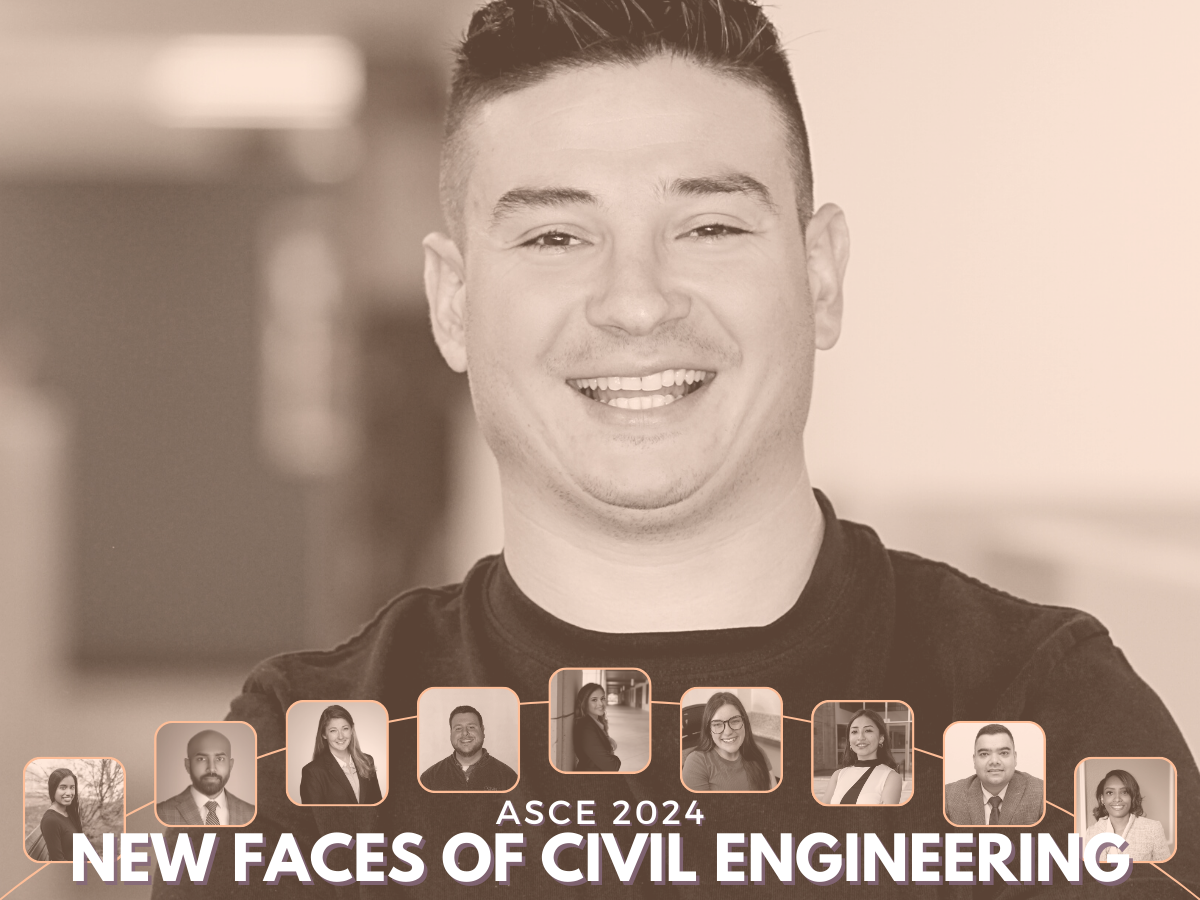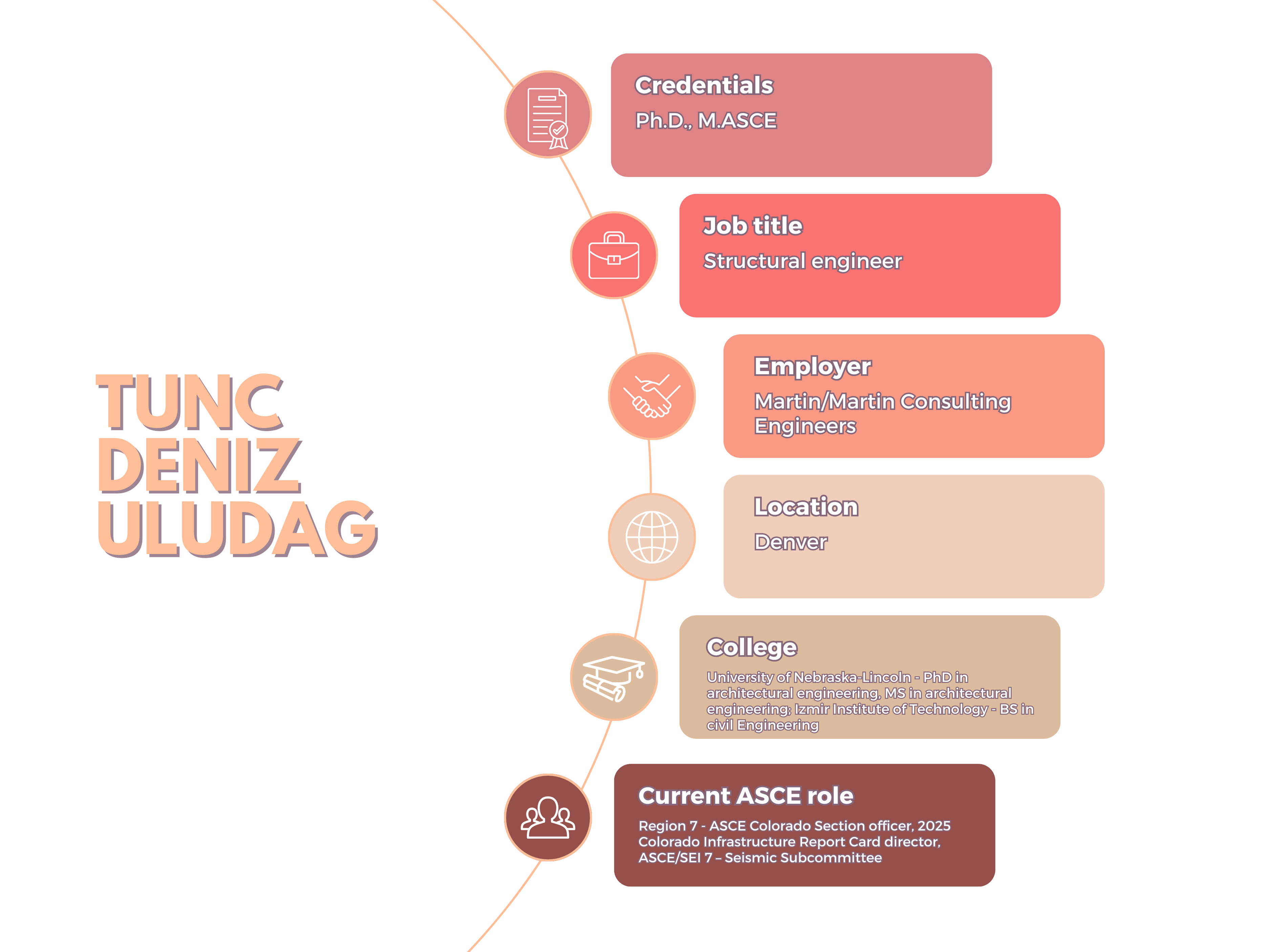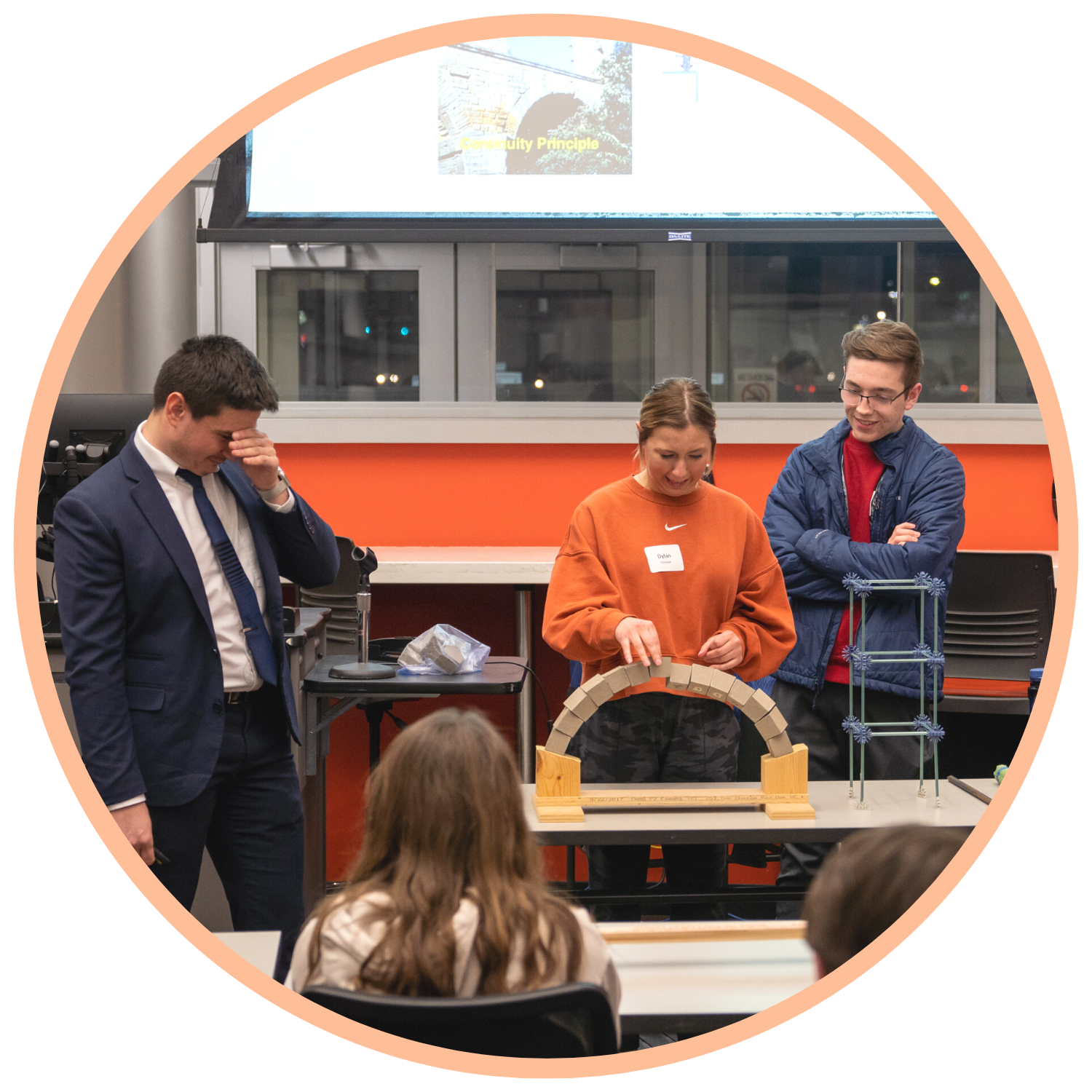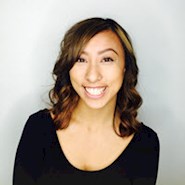

Tunc Deniz Uludag grew up in Western Turkiye, a region often prone to seismic events. But after a particularly devastating earthquake in 1999, he started wondering why these types of disasters occurred, and how widespread destruction could be avoided when they did.
Fast-forward about 20 years, Uludag began studying and working as a civil engineer in the United States, specializing in seismic engineering. His goal – to make communities more resilient to disasters like the ones he witnessed growing up.
Now he’s working as a structural engineer at Martin/Martin Consulting Engineers in Lakewood, Colorado. ASCE has honored him as a 2024 New Face of Civil Engineering.
“Mainly what I’m trying to do in our industry, in academia, with the public, and with the next generation, is to be a bridge. I want to connect these all together so that we can build something better and more resilient. I want to be a bridge for everyone and between different countries too,” said Uludag.
In February 2023, tragedy struck his homeland. A 7.8 magnitude earthquake devastated the southeast region of Turkiye, followed by a series of high-magnitude aftershocks. Without hesitation, Uludag began searching for ways to help those affected by the earthquake and to inform others of the urgency and impact of this disaster.
He started by gathering data from seismic recording stations and comparing it with the design-level earthquake. He then shared these findings on LinkedIn, and these posts spread across the United States and to various organizations.
But Uludag wanted to do more. So he volunteered to join the reconnaissance team that visited Turkiye to investigate the impacted areas. During the mission, another 6.4 magnitude earthquake struck the area. The devastation only further motivated him to use his civil engineering expertise to serve as a bridge to building better communities around the world.
He recently spoke with Civil Engineering Source about his career.

Civil Engineering Source: What’s the accomplishment or aspect of your career so far that you’re most proud of?
Tunc Deniz Uludag: I would say the achievement I’m most proud of is my involvement in the post-earthquake reconnaissance mission in Turkiye in February 2023. That was a devastating earthquake. I’m very sad about what happened there.
Afterwards, I was part of a team of engineers from the United States who conducted a structural and geotechnical investigation of the earthquake-affected areas. We documented the damage and failure mechanisms of various types of buildings and infrastructure. And we identified the lessons learned and the recommendations for improving the seismic design and performance.
This mission was a significant contribution to the engineering community and society as it provided valuable insights and data for earthquake risk reduction in earthquake-prone zones. It was also a personal and professional milestone for me as it connected me to my homeland and inspired me to pursue my passion for structural and seismic engineering.
I have shared the findings and experiences of this mission with the engineering society around the world. We have published a report and an article, and I have presented our findings at several events and conferences, and on TV channels, podcasts, and other places. It’s important to note that the earthquake was a tragic disaster that affected many people and places. I hope it raises awareness in society. While this was an achievement for me, unfortunately, the event was really tragic and sad.
Source: Could you please share how the 1999 Izmit Earthquake led you to where you are now?
Uludag: My journey from that moment to where I am now was long and challenging, but also rewarding and inspiring. The earthquake in 1999 was a devastating disaster. I witnessed the effects the earthquake had on the buildings, infrastructure, and people.
I was so little. You cannot remember everything, but I still remember how scared people were. I felt helpless and scared. And I remember sleeping inside a car for a couple of days because there were lots of aftershocks. Once you see stuff like that, it’s not easy to go back inside the house.
After that, I was curious and determined to understand why and how this happened. It was something I had on my mind all the time. Once you experience something like that and then you learn about civil engineering, it makes sense to go in that direction [for a career].
Right now, I see lots of Turkish people [in civil engineering]. And I think they probably had a similar inspiration as me because Turkiye is a high-seismic region. It’s not just one earthquake. It’s also experiencing many of them while growing up.
In the last year of my undergrad degree, I worked with two professors from Politecnico di Milano in Italy on a seismic energy dissipation device – an innovative solution to earthquake engineering. And that basically connected me with the seismic engineering community. And luckily for me, a group from the United States visited my town and used my university as a laboratory. During this time, they saw some designs I created for various competitions on display in the civil engineering department. They realized that I was working on similar concepts, like energy dissipation devices. So, I got an offer to attend the University of Nebraska–Lincoln for a direct Ph.D., which allows you to skip the master’s [degree] and start your Ph.D. right after [your] undergraduate degree.
That was a great offer, and kind of a dream, going to the United States. I was going to study seismic engineering. That was going to be my expertise. This was the opportunity for me to advance the state-of-the-art in seismic engineering so I could develop something new and contribute to society.
But I also wanted to do research, create publications, and design the solutions so that we would not see those tragic disasters. I want to practice, learn, and contribute to society by designing safe structures, not just for seismic, but various natural hazards.
During my Ph.D., I wanted to help in other ways as well. Because I’m coming from a different country with challenging conditions, I know it’s not easy for some people [in these areas] to reach out to gain knowledge or to find out “What do engineers do?” They might lack the inspiration or enthusiasm for civil engineering. So I wanted to feed that curiosity and inspire them. So I helped create lots of outreach activities. I was teaching about what structural engineers do. I had around 500 students, and maybe 300 of them were young ladies. So I’m so proud of that too.
Even after I graduated and then started at Martin/Martin I continued going to schools to help by sharing my knowledge, my passion, my enthusiasm.
To further increase curiosity in engineering, I’m involved with lots of organizations. Currently I am an associate member of ASCE and serve in the ASCE/SEI 7 Main Committee and Seismic Subcommittee for the 2028 cycle. I am also the secretary of the NCSEA seismic committee and ASCE Colorado Section. I’m vice chair of the SEAC seismic committee and a moderator for the ATC/FEMA training program.
Source: What kind of impact do you hope to make on the profession?
Uludag: Helping society become more resilient to disasters is my passion in the profession. I believe that civil engineering is not only a technical discipline, but also a social one, as it affects the safety, functionality, and sustainability of the built environment. I don’t want future generations to be inspired by tragic disasters or to choose to be engineers because of tragic events. I don’t want that.
I want them to be inspired by the positive and creative aspects of civil engineering, and to choose to be engineers because of their curiosity and enthusiasm.
To increase that curiosity, I want to help advance the state-of-the-art in civil engineering, increase the use of innovative methods, and make society more resilient, by designing and building structures that can withstand a variety of loads and hazards.
To increase the enthusiasm, I want to share my knowledge with the engineering community and the next generation of engineers, by serving in various committees and organizations, participating in various events and initiatives, and creating and staffing educational stations.
Source: What kinds of things are you doing right now in your outreach efforts that are working toward that goal?
Uludag: Currently around Colorado, I get invites from schools to review students’ project work. And these are second- or third-year students or students in their last year. I go there to give them my expertise and my knowledge before they begin their professional practice. So I give them feedback while they are still students and advice on what they can do before graduation.
We also have a program in Colorado that allows me to help students who cannot easily find engineers around them. It’s not easy if you don’t know anyone [who is a civil engineer].
When I was a student in Turkiye during my undergrad degree, I was the founder of a student civil engineering association that brought industries, students, and professors together in a mentorship program. Now I try to give back to the society by mentoring students from Turkiye. Recently, a group of my mentees made it to the finals of the 2024 EERI Seismic Design Competition in Seattle, Washington!



